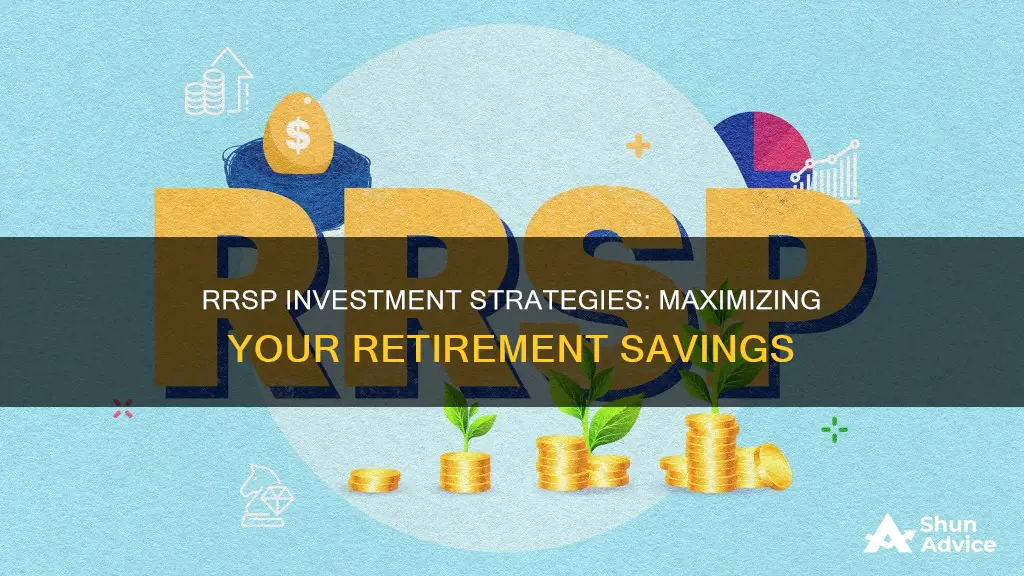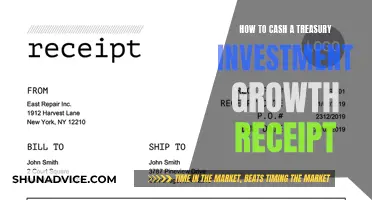
A Registered Retirement Savings Plan (RRSP) is a savings plan registered with the Canadian federal government that offers tax advantages to help you save for retirement. RRSPs are a great way to save for retirement while also benefiting from tax deductions in the present. You can open an RRSP at any age, as long as you have earned income and file a tax return. There are no minimum age requirements, but some financial institutions may require customers to be of legal age.
RRSPs allow you to defer taxes on your investment earnings, meaning you can save more of your money and grow your investments faster. Additionally, you can deduct RRSP contributions from your taxable income, potentially lowering your tax bill. The earlier you start investing for retirement, the better, as compound interest can help your savings grow over time.
There are different types of RRSPs available, including individual, spousal, and group RRSPs, each with its own advantages. You can also choose from a variety of investment options, such as stocks, bonds, mutual funds, and more, depending on your risk appetite and the financial institution you choose to open your RRSP with.
Overall, RRSPs offer a great way to save for retirement while also taking advantage of tax benefits along the way.
| Characteristics | Values |
|---|---|
| Type of Plan | Registered Retirement Savings Plan (RRSP) |
| Purpose | Saving for retirement |
| Tax Benefits | Yes |
| Tax Benefits Description | Tax-deductible contributions, tax-deferred savings, and tax-free withdrawals depending on circumstances |
| Investment Options | Stocks, bonds, guaranteed investment certificates (GICs), mutual funds, ETFs, government and corporate savings bonds, and more |
| Contribution Limit | 18% of previous year's earned income or maximum annual contribution limit (whichever is lower) |
| Age Limit | Must close by December 31 of the year the holder turns 71 |
| Withdrawal Options | Withdrawals allowed at any time but may be subject to tax |
| Withdrawal Options Description | Withdrawals for first-time home purchases and education are permitted without immediate tax consequences |
What You'll Learn

Tax advantages of RRSPs
RRSP stands for Registered Retirement Savings Plan. It is a tax-advantaged account created by the Canadian government to provide tax breaks to anyone who uses it. RRSPs are available to employees and self-employed individuals in Canada. They are similar to 401(k) plans in the US.
Tax-Free Growth
RRSPs allow your investments to grow tax-free until you withdraw them. This means that any investment income (interest, dividends, or capital gains) earned within an RRSP is not subject to tax until the money is withdrawn. This is a significant advantage as it allows your investments to compound faster without the drag of annual taxes.
Tax Deductions on Contributions
Contributions to an RRSP are made with pre-tax money and can be deducted from your income when you file your tax return. For example, if your tax rate is 40%, every $100 you invest in an RRSP will save you $40 in taxes, up to your contribution limit. This can result in a substantial tax rebate, potentially thousands of dollars.
Carry Forward Contributions
You are not required to deduct your RRSP contributions every year. You can carry forward your RRSP contributions and apply them to a future tax year. This can be beneficial if you expect your income and tax rate to be higher in the future, as you can claim the deduction when it will have a greater impact.
Defer Taxes Until Retirement
RRSPs allow you to delay paying taxes on your contributions and investment gains until you withdraw the funds, typically during retirement. As your income is likely to be lower in retirement, your marginal tax rate will also be lower, resulting in lower taxes on your withdrawals.
Spousal RRSP
A spousal RRSP allows a higher-earning spouse to contribute to an RRSP in their lower-earning spouse's name and receive the tax deduction. This helps to equalize retirements and reduce taxes for the couple during retirement.
Owner's Investment Cash: Operating Activity?
You may want to see also

RRSP contribution rules
A Registered Retirement Savings Plan (RRSP) is a tax-advantaged savings plan registered with the Canadian federal government. RRSPs are designed to help you save for retirement. Here are the key contribution rules:
Contribution Limit
The contribution limit for 2024 is $31,560 or 18% of your 2023 earned income, whichever is lower. This limit includes contributions to all RRSPs in your name and any spousal accounts you contribute to. You can carry forward any unused contribution room indefinitely, and it will be added to your maximum contribution amount for the following year.
Contribution Deadline
The contribution deadline for the 2023 tax year is February 29, 2024. The last day to contribute to an RRSP is December 31 of the year you turn 71.
Tax Implications
Contributions to an RRSP are tax-deductible, meaning they can reduce your taxable income for the year. Any investment income earned within the RRSP is generally tax-exempt until you withdraw the funds. Withdrawals are considered taxable income and are subject to withholding taxes.
Over-Contribution
If you over-contribute to your RRSP by more than $2,000, you will be subject to a 1% per month penalty on the excess amount.
Early Withdrawals
While you can technically withdraw funds from your RRSP at any time, early withdrawals will be subject to taxes and will impact your retirement plan. There are, however, two exceptions: the Home Buyers' Plan and the Lifelong Learning Plan. These plans allow you to borrow money from your RRSP to buy your first home or for education without immediate tax consequences, as long as you repay the amount within the specified time frames.
Eligibility
To be eligible to open and contribute to an RRSP, you must be a Canadian resident with a Social Insurance Number (SIN), have earned income, and file a tax return in Canada.
How Cash App Investing Works for Beginners
You may want to see also

RRSP investment options
RRSPs (Registered Retirement Savings Plans) are a great way to save for retirement while taking advantage of tax benefits. There are several investment options available within an RRSP. Here are some of the most common ones:
- Stocks: You can invest in individual stocks listed on designated stock exchanges. This allows you to own a part of a company and benefit from its growth.
- Mutual Funds: Mutual funds pool money from multiple investors and use it to invest in a diversified portfolio of stocks, bonds, or other securities. They offer a simpler way to invest in a variety of assets without having to choose individual investments.
- Exchange-Traded Funds (ETFs) : ETFs are similar to mutual funds but trade on stock exchanges. They typically track an index or sector and can be bought and sold like stocks.
- Bonds: You can invest in government and corporate bonds, which are essentially loans to governments or companies. Bonds offer a fixed rate of return and are considered a relatively low-risk investment.
- Guaranteed Investment Certificates (GICs) : GICs offer a guaranteed rate of return over a fixed period, providing a stable investment option.
- Securities: RRSPs can hold securities such as stocks, bonds, or other financial instruments that are traded on designated stock exchanges.
- Options: Options give you the right to buy or sell an underlying asset at a specified price within a specific time frame. They can provide leverage and allow you to benefit from price movements without owning the underlying asset.
When choosing investments for your RRSP, it's important to consider your risk tolerance, investment horizon, and financial goals. It's always recommended to consult with a financial advisor to determine the most suitable investment options for your specific needs.
Investing Cash During Inflation: Strategies for Success
You may want to see also

RRSP withdrawal rules
RRSPs are a great way to save for retirement, but there are some important rules to be aware of when it comes to making withdrawals. Here are the key RRSP withdrawal rules to keep in mind:
Timing of Withdrawals
You can make a withdrawal from your RRSP at any time, provided your funds are not in a locked-in plan. However, it's important to note that withdrawals made before maturity can impact your tax bill and may result in a higher tax rate. RRSPs reach maturity on December 31 of the year you turn 71. At this point, you must stop contributing to your RRSP and choose from the following options:
- Make a lump-sum withdrawal: You can withdraw all the funds in your RRSP, but the amount will be subject to withholding tax and must be included as income when filing your taxes.
- Convert to a Registered Retirement Income Fund (RRIF): A RRIF provides a steady flow of retirement income, with a minimum amount that must be withdrawn each year. While annual withdrawals are required, they are not subject to withholding tax at the time of withdrawal.
- Purchase an annuity: You can convert your RRSP to an annuity, which guarantees income for life or a specified period. Withholding tax is not applied when purchasing an annuity, but you may have to pay tax on the income you receive.
Tax Implications
RRSP withdrawals are generally subject to withholding tax and must be included as income when filing your taxes. The withholding tax varies depending on the amount withdrawn and your province of residence. If your current income is higher than your retirement income, you'll likely pay more taxes on withdrawals. Additionally, any investment income earned on investments held within the RRSP will be taxed when withdrawn.
Home Buyers' Plan (HBP)
The HBP allows you to withdraw from your RRSP to buy or build a qualifying home for yourself or a specified disabled person. The current withdrawal limit under the HBP is $60,000. Withdrawals made under this plan are not subject to withholding tax or included as income, as long as the funds are repaid to your RRSP within the specified timelines. Repayments typically begin two years after the withdrawal and must be completed within 15 years.
Lifelong Learning Plan (LLP)
The LLP lets you withdraw from your RRSP to fund full-time education or training for yourself, your spouse, or your common-law partner. Withdrawals of up to $10,000 per year, with a lifetime maximum of $20,000, are allowed under this plan. Similar to the HBP, withdrawals under the LLP are not taxable as long as the funds are repaid to your RRSP within the specified timelines. Repayments typically start five years after the first withdrawal and must be completed within 10 years.
Spousal RRSP Withdrawals
Withdrawals from a Spousal RRSP can only be made by the annuitant, who is generally the person for whom the plan provides a retirement income. If contributions are made to the Spousal RRSP in the year of withdrawal or the two preceding years, the attribution rule may apply, and the withdrawing annuitant must include the withdrawal amount as income.
Borrowing to Invest: A Guide to Getting Started
You may want to see also

RRSP vs TFSA
A Registered Retirement Savings Plan (RRSP) is a savings plan registered with the Canadian federal government that you can contribute to for retirement purposes. RRSPs offer tax advantages, such as tax-deductible contributions and tax-deferred savings. This means that contributions are exempt from being taxed in the year you make them, and any investment income earned from investments held within the RRSP can grow tax-deferred until it is withdrawn.
A Tax-Free Savings Account (TFSA) is a registered account that you can use to save and get tax advantages. Unlike RRSPs, there are no tax deductions on contributions to a TFSA, but withdrawals are tax-free. There is also no age limit for a TFSA, whereas you can only contribute to an RRSP until December 31 of the year you turn 71.
Both RRSPs and TFSAs have contribution limits, and any unused contribution room is carried forward. For a TFSA, the 2024 contribution limit is $7,000, while the RRSP contribution limit for the 2023 tax year is $30,780 or 18% of your earned income from the previous year, whichever is lower.
RRSPs are typically used for retirement savings, whereas TFSAs are used for any savings purpose. If you're saving for retirement, an RRSP may be a good choice as it defers paying tax from your peak earning years to retirement, when your income and tax liabilities may be lower. A TFSA can be a good option if you want easier access to your funds, as it allows you to make withdrawals at any time without losing contribution room in the following year.
You can use both RRSPs and TFSAs to save for your future, and many people choose to have both types of accounts to save for multiple goals at once.
Cash App's Investing Tile: What's the Deal?
You may want to see also
Frequently asked questions
A Registered Retirement Savings Plan (RRSP) is a savings plan registered with the Canadian federal government. It allows you to save for retirement while benefiting from tax advantages.
RRSPs offer tax advantages, including tax-deductible contributions and tax-deferred investment income. This means you may pay less tax now and your savings can grow faster. You can also borrow from your RRSP to buy your first home or pay for education.
Early withdrawals from an RRSP will increase your tax bill and have a withholding tax deducted upfront. Withdrawals may also affect your eligibility for government benefits.
You can open an RRSP at a bank, credit union, investment firm, or life insurance company. There is usually no charge to open an account, but there may be annual administration or trustee fees. You can also set up a self-directed RRSP where you make the investment decisions yourself.







